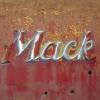-
Posts
3,062 -
Joined
-
Last visited
-
Days Won
16

thomastractorsvc replied to thomastractorsvc's topic in Trucks for Sale

thomastractorsvc replied to thomastractorsvc's topic in Air Systems and Brakes

Images added to a gallery album owned by thomastractorsvc in BMT Member's Gallery - Click here to view our member's albums!

thomastractorsvc posted a gallery image in BMT Member's Gallery - Click here to view our member's albums!
From the album: 1959 B 61

thomastractorsvc posted a gallery image in BMT Member's Gallery - Click here to view our member's albums!
From the album: 1959 B 61

thomastractorsvc posted a gallery image in BMT Member's Gallery - Click here to view our member's albums!
From the album: 1959 B 61

thomastractorsvc posted a gallery image in BMT Member's Gallery - Click here to view our member's albums!
From the album: 1959 B 61

thomastractorsvc posted a gallery image in BMT Member's Gallery - Click here to view our member's albums!
From the album: 1959 B 61

thomastractorsvc posted a gallery image in BMT Member's Gallery - Click here to view our member's albums!
From the album: 1959 B 61

thomastractorsvc replied to thomastractorsvc's topic in Air Systems and Brakes

thomastractorsvc posted a gallery image in BMT Member's Gallery - Click here to view our member's albums!
From the album: 1959 B 61

thomastractorsvc posted a gallery image in BMT Member's Gallery - Click here to view our member's albums!
From the album: 1959 B 61

thomastractorsvc posted a gallery image in BMT Member's Gallery - Click here to view our member's albums!
From the album: 1959 B 61

thomastractorsvc posted a gallery image in BMT Member's Gallery - Click here to view our member's albums!
From the album: 1959 B 61

thomastractorsvc posted a gallery image in BMT Member's Gallery - Click here to view our member's albums!
From the album: 1959 B 61

thomastractorsvc posted a gallery image in BMT Member's Gallery - Click here to view our member's albums!
From the album: 1959 B 61

thomastractorsvc posted a gallery image in BMT Member's Gallery - Click here to view our member's albums!
From the album: 1959 B 61

thomastractorsvc posted a gallery image in BMT Member's Gallery - Click here to view our member's albums!
From the album: 1959 B 61

thomastractorsvc posted a gallery image in BMT Member's Gallery - Click here to view our member's albums!
From the album: 1959 B 61

thomastractorsvc posted a gallery image in BMT Member's Gallery - Click here to view our member's albums!
From the album: 1959 B 61

thomastractorsvc posted a gallery image in BMT Member's Gallery - Click here to view our member's albums!
From the album: 1959 B 61
BigMackTrucks.com is a support forum for antique, classic and modern Mack Trucks! The forum is owned and maintained by Watt's Truck Center, Inc. an independent, full service Mack dealer. The forums are not affiliated with Mack Trucks, Inc.
Thank you for your support!